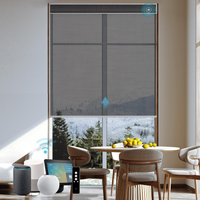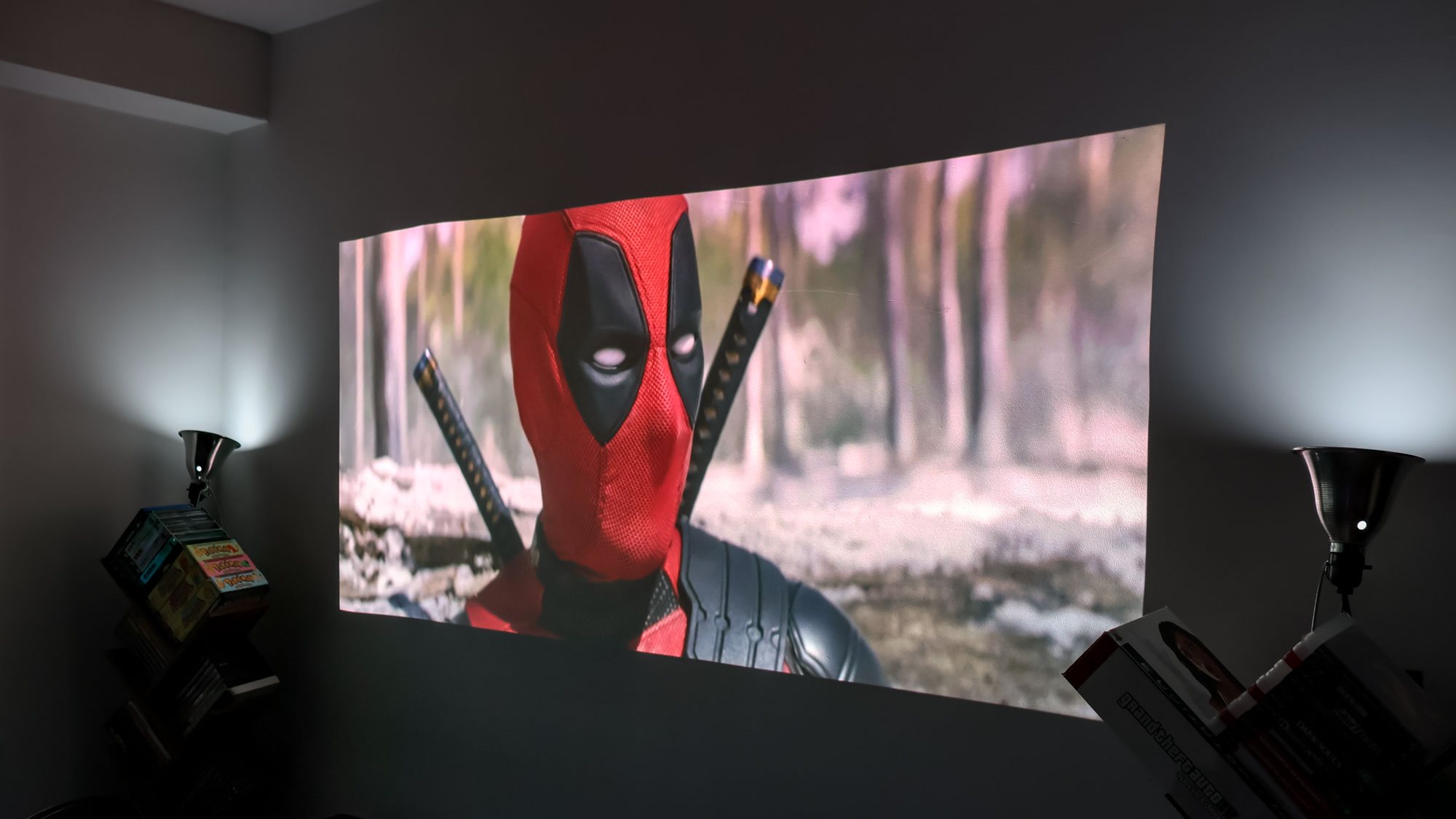
Movie nights call for the cinema. But, these days, who wants to go all the way to the movie theater for that kind of experience? You could saddle up in front of one of the best OLED TVs, but unless you have a 83-inch OLED and one of the best soundbars to go with it, that's not quite cinema-like immersion. That was my thinking in coming up with a way to bridge the cinema into my living room and, let me tell you, it's not easy (or cheap).
To get a pseudo-cinema-at-home you'll need as big of a display as is possible in your preferred budget range and a properly set up sound system with extra Dolby Atmos height speakers and maybe one or two subwoofers, too.
The ambiance of the cinema also calls for a bit more: Some extra pizzazz to make you really feel like you're not in your living room at all, but basking in the neon-drenched alleyways of "Tokyo Vice," or bracing against the zany apocalypse of "Fallout." For that you need special lighting and some shades to get the right level of captivating.
This was a crazy endeavor, but I think I managed to pull it off. You might even have better results if you can go a bit more expensive, but this is probably the best strategy for most buyers. Let's hit the theater without ever leaving the house.
Step 1. Get the right display
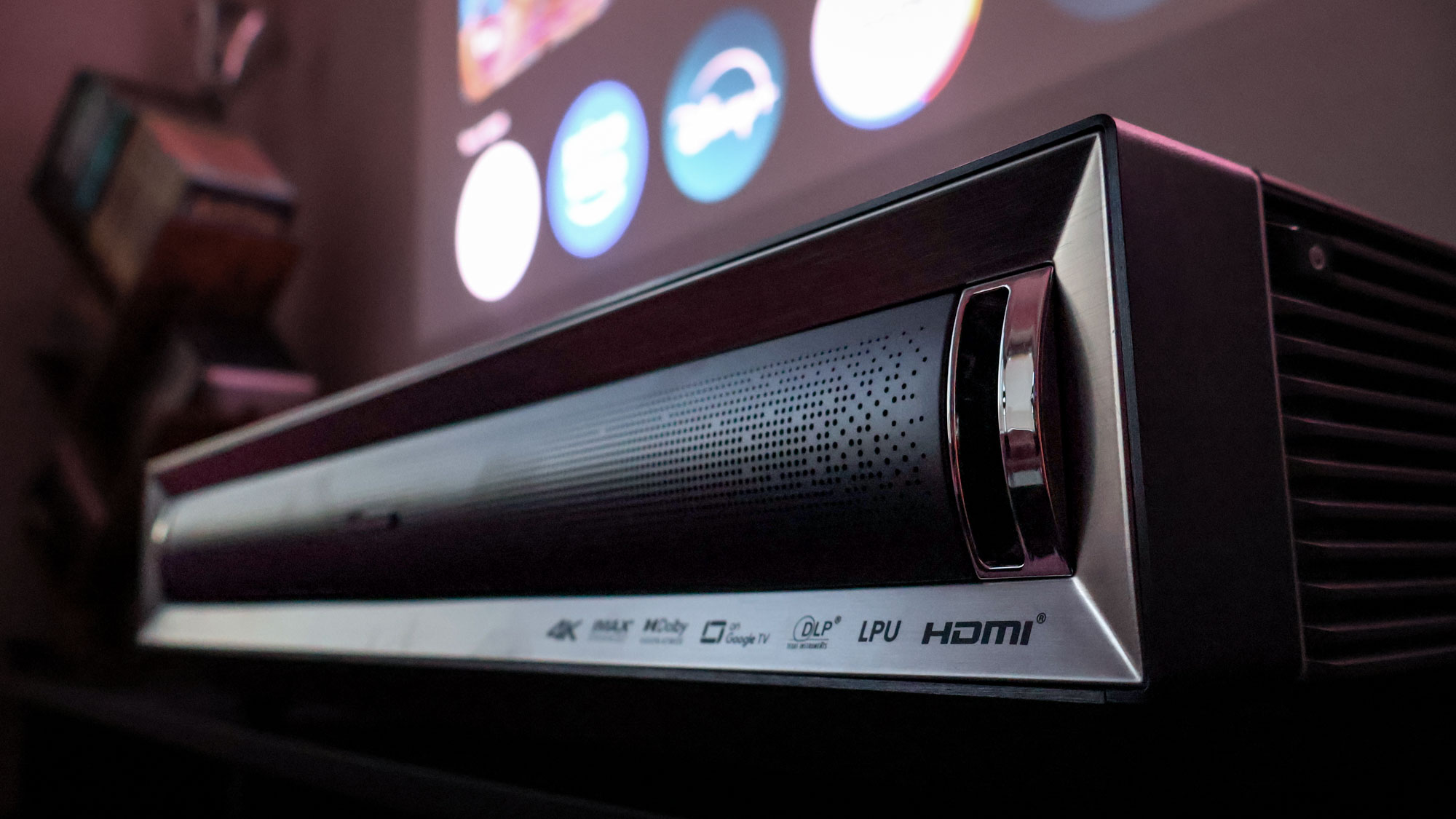
While you could get yourself one of the best TVs, the movie theater is, after all, home to some of the most sophisticated projectors no average consumer can buy. Lucky for you, there's some really good options in the home theater space that won't cost more than most houses. To get the right one, I went to our guide to the best projectors to get a similar movie-theater experience in my living room.
Instead of a traditional beamer, I'm going to recommend a UST (Ultra Short Throw) projector, as it's my personal favorite type in this category of display and offers the best bang for your buck. Meet the Hisense PX3-Pro, a triple-laser beast that's one of the first projectors to get Xbox-certified. That means it's an ideal one-two-punch for the movie lovers and gamers of the household. Hard to beat Elden Ring at 150-inch.
Do yourself a favor, though, and get some sort of an ALR screen. You don't have to spend a whole lot on one if you don't want to, as Amazon has tons of variations to choose from across different prices. VividStorm has some great premium models if you want the best possible image quality, or get something like this high gain 100-inch projector screen that's just $59 at Amazon.
Save $203! Offering a screen size ranging from 80 to 150 inches, the Hisense PX3-Pro literally brings the movie theater home. It uses a TriChroma laser that covers up to 110% of the BT.2020 Gamut and is even designed with Xbox with a 240 HSR (High Refresh Rate) via VRR and ALLM for incredible gaming coverage. It's also built on Google TV so you can access all your favorite apps and even smart home tech.
Price check: $3,299 @ Best Buy
But projectors aren't for everyone, as they can be complicated to set up and often require a fully dark environment for the best possible picture quality. If that's the case, given that TVs are getting bigger and coming dangerously close to their projector counterparts, I suggest the 115-inch TCL QM89 Mini-LED TV or even a 97-inch LG G4 OLED TV.
If money's truly no option, just get yourself a 136-inch Hisense MicroLED TV. If you've got hundreds of thousands to throw down on it, few rival displays will top that.
The Sound
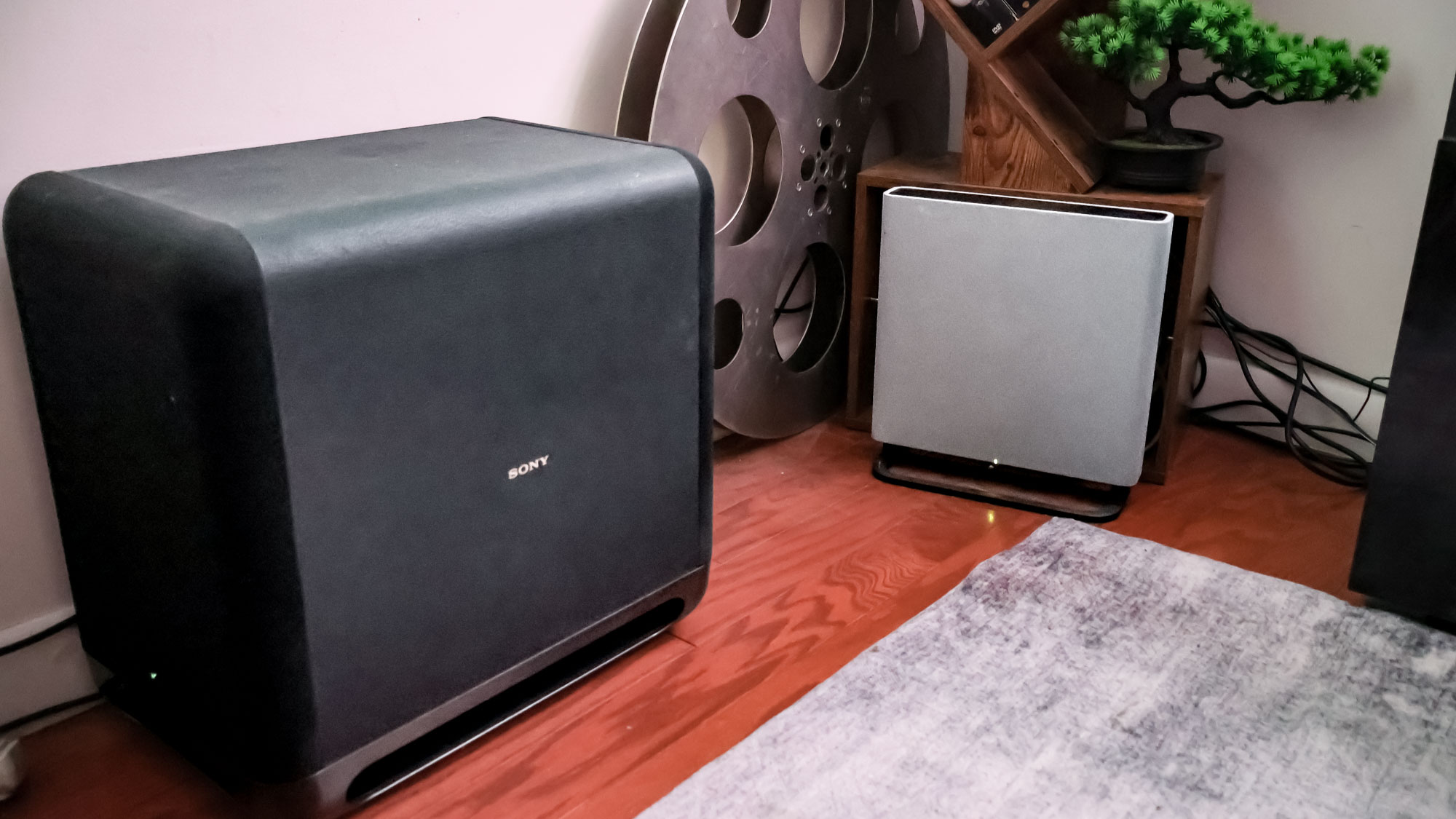
What pseudo movie theater would it be without punchy, hard-hitting, bone shaking audio? I'm talking sound you can feel, an auditory experience that should feel like a you're at a concert when playing your favorite music or in the middle of an actual bank robbery when watching "Heat." You should be able to literally feel the weight of the infinity stones in the hands of Thanos when watching "Avengers: Infinity War," not to mention the slow subtle breaths of the Xenomorph standing right behind you in "Alien: Romulus."
That's why I've connected the Sony Bravia Theater Quad to the PX3-Pro. I know what you're thinking, didn't you just complain about Sony's new $2,000 speaker system, and you'd be right. But I did specify in that very same article that, of all the things the Theater Quad is best paired with, a projector is the most apt candidate. When room-filling sound from all angles is required, the Theater Quad has you covered.
Save $300! This is a state-of-the-art surround sound system by Sony that doubles as home décor. With four wireless speakers, the Sony Bravia Theater Quad brings all-around sound via a 360 spatial sound mapping procedure that envelops the area in Dolby audio. It's a major diligence from a typical soundbar, yet offers incredible coverage for the right environment.
Price check: $2,199 @ Best Buy
It's no secret that TVs tend to have bad speaker systems and the same is very much true for their projector counterparts — despite the fact that they tend to have well-known audio companies building them. Case in point is the PX3-Pro, which has a pair of Harmon Kardon speakers that are...well, not quite as prodigious as the projector's visual performance.
The Sony Bravia Theater Quads blow these onboard speakers out of the water. Better still, given the design ethos of the Quads, I can place the speakers practically anywhere. I currently have the two front-facing speakers sitting in front of my movie and video game displays (expertly hiding some cable management), but they might better be served seated directly next to the projector on my entertainment stand.
Although a major pain point, the Bravia Theater app lets me fine-tune the Theater Quads audio with settings like "Height of sound" for improved dialogue, not to mention both Sound Field Optimization and IMAX Enhanced mode. This brings out the best audio quality across a variety of different scenarios and it all sounds great despite their small size.

But I totally get if the Sony Theater Quads aren't for you. There's several other notable options I recommend, namely the Sonos Arc Ultra, which we gave a perfect score. Just make sure to get the E100 surround sound speakers and one Sonos Sub 4 (or two) for impeccable immersion.
I can also recommend the Bose Smart Ultra soundbar home cinema system. This corrals the Smart Ultra with two Bose Module 500s and two Surround Speaker 700s for superior sound quality. Though the cheapest option in this category, the full Bose set up will still set you back at least $2,000. No one said movie-theater quality sound at home would come cheap.
Just note that if you go with a soundbar you will have to place it on the wall behind the projector or in front of the display, both of which aren't exactly ideal locations. UST projectors require a set throw distance and having the soundbar in front of the projector could be problematic depending on the size of surface it's placed on.
Lights, shades, and the smart home
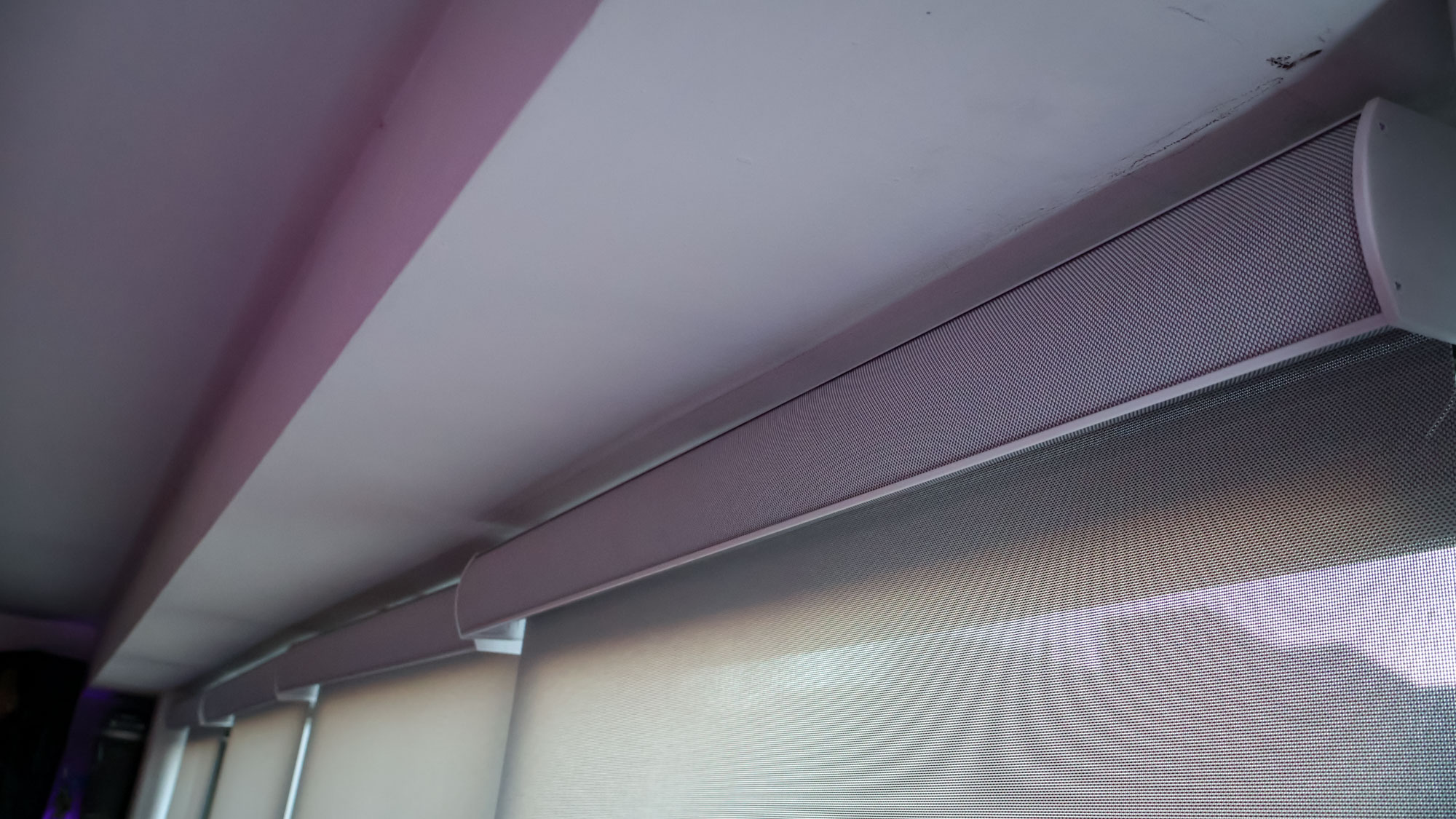
You can't have a movie theater at home without expert lighting and ambient light mitigation — especially if you're going the projector route. We are in 2025, after all, so it's high time to futureproof your home anyway.
There's a lot to explore among the best smart home devices, but I would recommend sticking to Matter-enabled options that work particularly well with Google. That's because many TVs these days are running on Google TV, which makes integrating these devices into a full-on ecosystem all the more streamlined.
To start, find some good lighting for the main stage, that is directly to the right and left of the projector screen. I recommend some Cync GE ones, like this A19 Smart LED light bulb that's $39 at Amazon. These are great for two reasons: they have both color and white hues, plus they work well with both Alexa and Google Home. You might not be able to clap to turn them off or on, but a simple tap on your phone (or even on your display) works just as well.
Your projector will need ample ambient light coverage, which is where SmartWings and its motorizes shades come into play. With Matter support, the SmartWings motorized light filtering roller shades let you steep your room in total darkness at the click of a button. Set up is also a breeze, with easy-to-understand instructions plus solar panel charging so you never have to worry about battery life. That's smart home living.
I'd also get some shades. You don't want any sunlight leaking into the room as it will mess with the contrast on the projector screen. Even if you get an ALR screen, you're going to need some proper ambient light mitigation. That's why you can't go wrong with the automated shades from SmartWings.
There's so many different options in shade design and color that it will make your head spin. But my advice is to stick with a higher blackout percentage. I actually went with just a mere 5% coverage thinking it would be more than enough to block out the sun, but you'll probably want more depending on your entertainment room's ambient environment. I'd say 60% is your best bet for ample ambient light coverage, but do make sure to get the Matter-enabled models.
Finally, you may need a smart home controller to rein it all in. It's not required, but some devices work better with a Smart Home hub, like the Amazon Echo Show 21. Again, I'd go with a Google device, like the Google Nest Hub, as most of the best projectors run on Google TV, but this ultimately comes down to user preference.
The $5,000 question
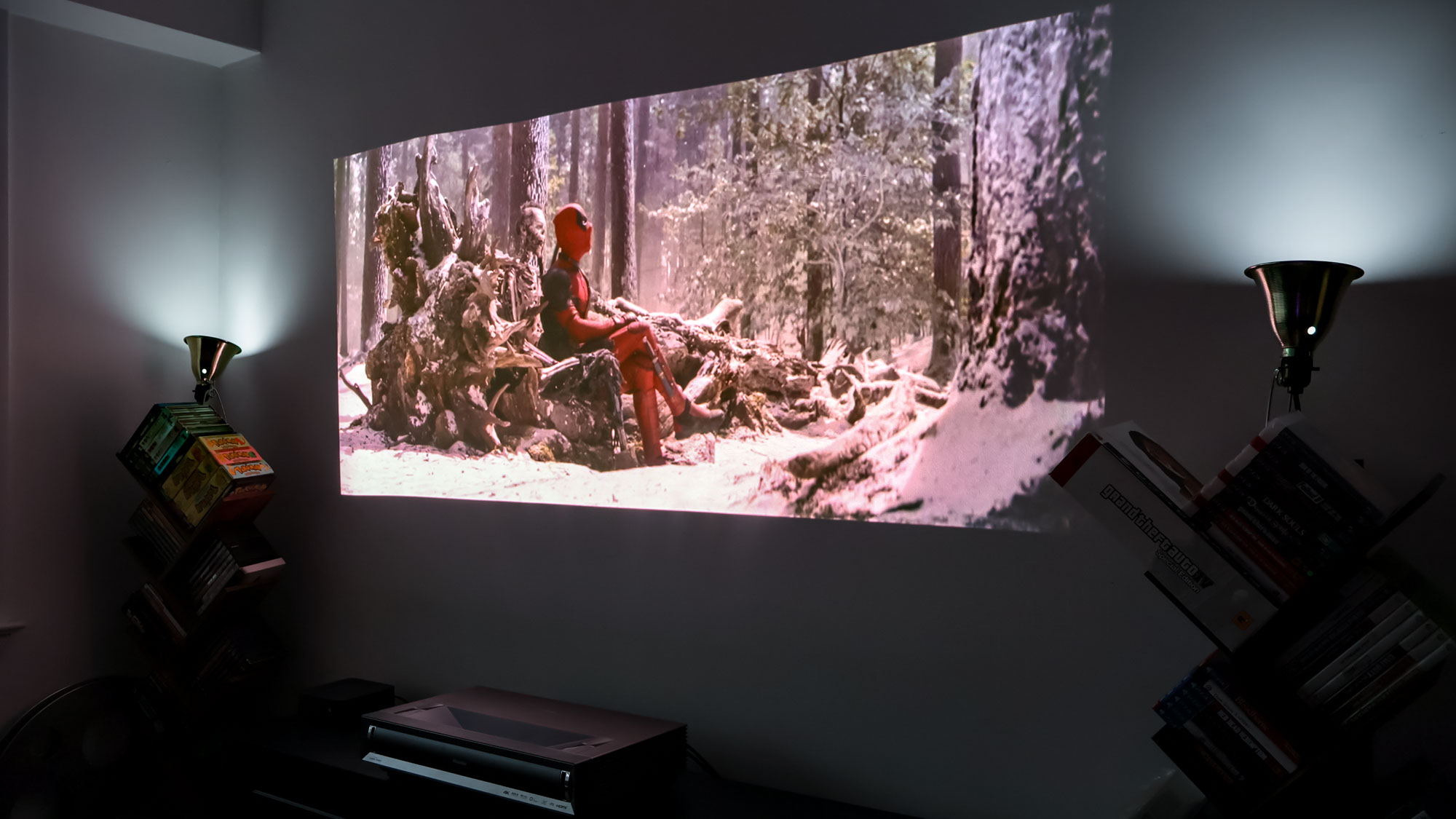
That's everything you'll need to get yourself the cinema at home. It's not quite a budget-minded setup, but maybe that's an experiment to consider for the future. All-in, the whole package I designed would come out to well over $5,000.
But is it all worth it? That's going to depend on how much you care about having a proper "home cinema". Not everyone wants or needs this level of performance. Heck, most of us are fine with a budget TV and soundbar. But these upgrades are going to last and will certainly impress friends and family when they come over for movie night.
That said, there's definitely room for improvement if you have a higher budget and are willing to get a custom installer involved. Even without all that, if you have enough space (and capital) for this kind of investment, it definitely turns HDR movies and intense gaming into unforgettable, immersive moments that feel like I'm living in a cinema without the overpriced soda and popcorn prices.
More from Tom's Guide
Sign up to get the BEST of Tom's Guide direct to your inbox.
Get instant access to breaking news, the hottest reviews, great deals and helpful tips.

Ryan Epps is a Staff Writer under the TV/AV section at Tom's Guide focusing on TVs and projectors. When not researching PHOLEDs and writing about the next major innovation in the projector space, he's consuming random anime from the 90's, playing Dark Souls 3 again, or reading yet another Haruki Murakami novel.
You must confirm your public display name before commenting
Please logout and then login again, you will then be prompted to enter your display name.


